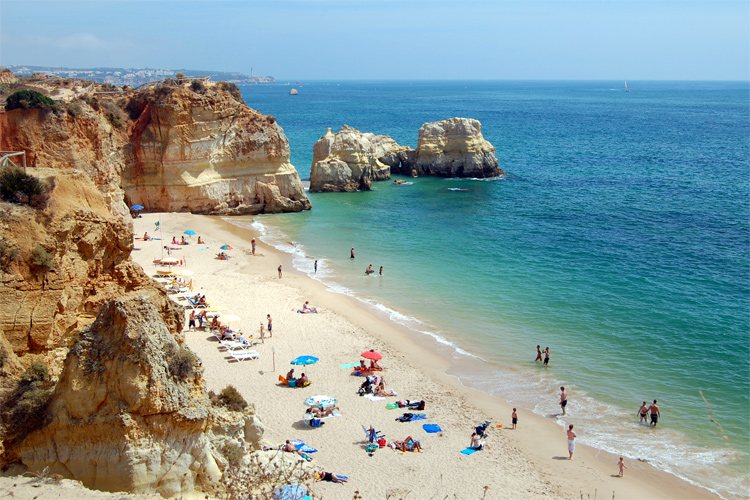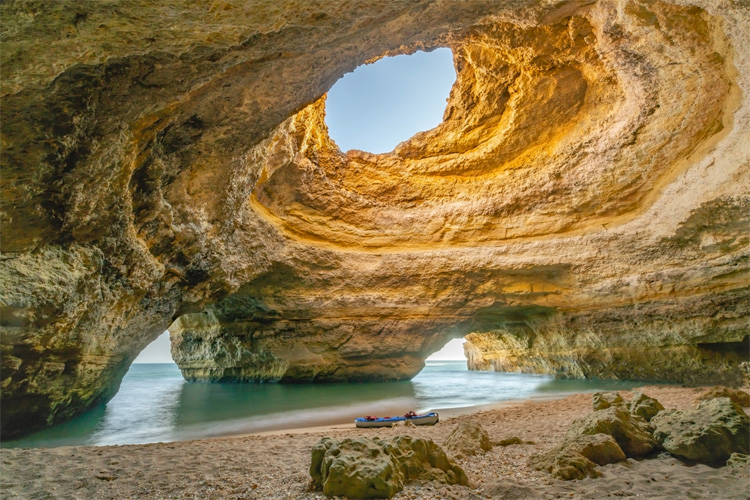Portugal has done a great job in the battle against the novel coronavirus COVID-19 pandemic and is preparing to open beaches on June 6.
Unlike many other countries, Portugal was able to flatten the curve.
Citizens adhered to the early national lockdown, avoiding a horrendous death toll and stress on Intensive Care Units (ICU).
A national sense of discipline, clear rules by the government, and a global conservative attitude toward social proximity led to positive results.
As a result, the westernmost nation in mainland Europe is slowly returning to normal, with coastline and beaches once again open to the public.
However, a strict list of rules and guidelines must be followed and respected to keep the outbreak under control.
But there's a strict list of rules and guidelines that must be followed to keep the outbreak under control.
The Portuguese authorities underline that they will close the beaches again if people don't respect the regulations.

2020 Portugal Bathing Season | Reopening Rules and Guidelines
Sand Stretch Usage
1. Keep a physical distance of 1.5 meters between each user (not valid for families);
2. Keep a distance of 3 meters between sun hats;
3. Sports activities with two or more people are forbidden (except for nautical activities, surf classes, and similar sports);
Awnings, Thatched Umbrellas, and Tents
1. Each person or group can only rent this equipment in the morning (until 13h30) or the afternoon (from 14h);
2. Keep a distance of 3 meters between awnings and thatched umbrellas;
3. Keep a distance of 1.5 meters between the limits of tents;
4. Maximum limit of five people per awning, thatched umbrella or tent;
5. Possible exceptional extension of concession area;
State of Occupation
1. The state of occupation will be announced through the signposting or semaphore. Green for low occupation (1/3), yellow for high occupation (2/3) and red for full occupation (3/3);
2. Information will be updated in real-time via the app "Info Praia" and on the Portuguese Environment Agency's (APA) website;
3. It is forbidden to park vehicles outside the parks and parking areas licensed for this purpose;
Circulation Rules
1. One-way circulation direction rule with a physical distance of 1.5 meters;
2. Circulation lanes - parallel and perpendicular to the coastline - may be announced and defined;
Bars, Restaurants and Terraces
1. Regular hygiene of spaces with a minimum of four daily cleanings;
2. Limitation on capacity, according to the terms applicable to restaurants;
3. Possible reorganization of terraces to ensure a safe distance;
Mobile Sales
1. Mandatory use of mask and visor by the seller in contact with customers;
2. The circulation of street vendors should be done at a physical distance and preferably through circulation lanes;
Equipment
1. The use of gulls, slides, or indoor showers is forbidden;
2. Outdoor showers, sun loungers, mattresses, or beach ashtrays should be sanitized daily or whenever a change of user occurs;
General User Duties
1. Avoid access to areas with high or full occupation;
2. Regular hand disinfection is mandatory on arrival at the beach;
3. Ensure physical safety distance in beach use and bathing;
General Rules
1. The rules are applicable to "bathing beaches" only;
2. Beach interdiction is a possibility in case of serious breaches by users or concessionaires
